Facebook and Apple both report earnings Wednesday the 27th after the close.
Here’s a look at the recent stocks’ history and how options are pricing the expected move out to this Friday.
Apple options are pricing about a 6% move in either direction by Jan 29th expiration, which captures earnings:
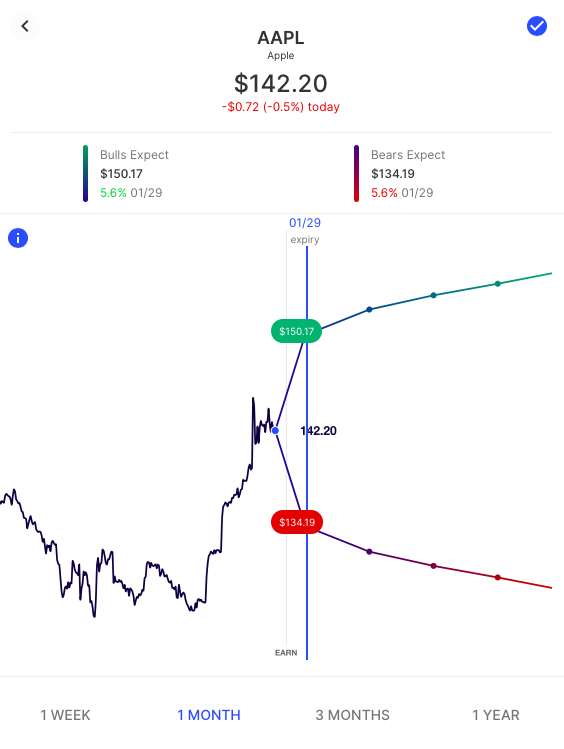
Prior Apple earnings weeks via Options AI Calendar

Facebook options are also pricing about a 6% move in either direction by Jan 29th expiration, which captures earnings. For this week, that corresponds to about $265 and $300 in the stock.

And the prior Facebook earnings weeks via Options AI Calendar

Using Option Spreads and the Expected Move
The Options AI expected move chart helps traders visualize just how much volatility option traders are pricing into a stocks like Apple and Facebook and in what timeframe. And when the expected move is large, it follows that buying options can be expensive.
So, using Facebook as an example, we look at how Spreads can be used to either lower that cost through buying Debit Spreads or generate income through selling Credit Spreads and how the expected move can be used to help guide strike selection.
Using the Move for Bullish Spread Strategies
Let’s consider the scenario where as a trader you are bullish and knowing the expected move to your timeframe, you also believe that the options market is generally correct in its bullish consensus. In other words, the stock is going up, but its likely not going beyond where the market has priced a potential move.
In this scenario, rather than simply buying a call option, you might choose to simultaneously sell a higher strike call at the expected move level, creating a Debit Call Spread. This lowers the overall cost (thereby also lowering the breakeven level and increasing probability of profit) in exchange for capping potential upside (beyond where the market has priced the move).
Let’s look at an example as applied to Facebook. Below is a $15 debit call spread for February 19th, capturing both Demo Day, and earnings, with a breakeven in the stock near $36, and max profit above $42:
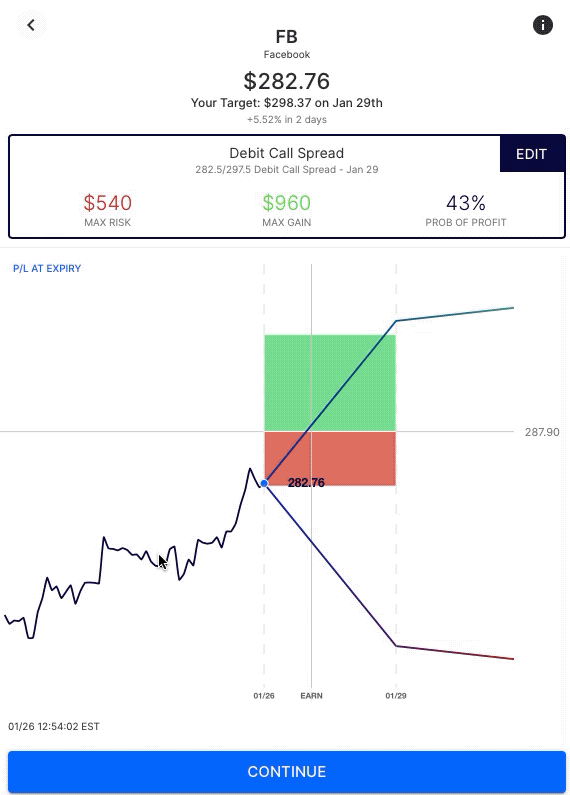
Now let’s look at an alternative bullish strategy that seeks not to lower cost, but rather to capitalize on higher option prices and generate income by ‘selling to the bears’.
Below, we see a $15 wide Credit Put Spread, that could be viewed as essentially ‘mirroring’ the Debit Call Spread – in this case selling an at-the-money Put option and simultaneously buying a Put option at the expected move level (thereby limiting potential downside and defining risk). Note that max. gain is realized with a move higher in the stock – essentially being bullish by “selling to the bears”:
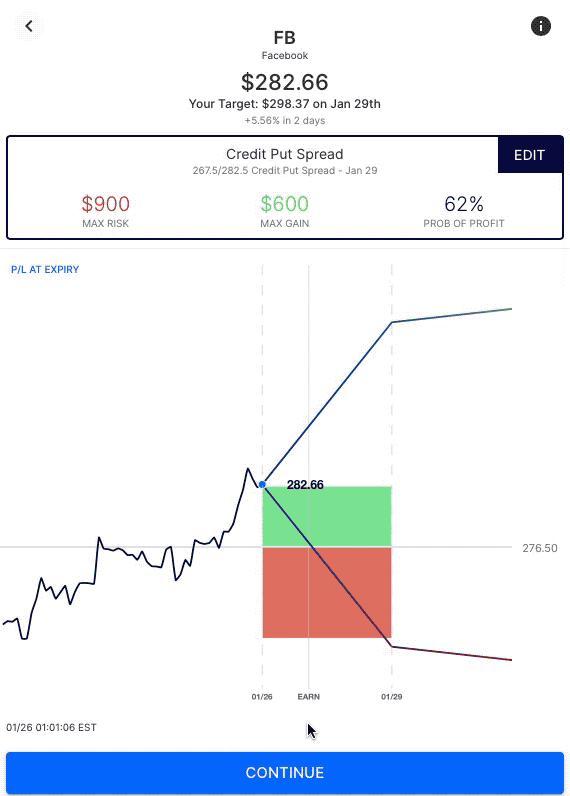
Whether a trader chooses a Debit or a Credit Spread might depend on their own level of bullishness, compared to the crowd.
Using the Move for Bearish Strategies
The same concepts apply to Spreads with a bearish view, with Debit Spreads to the expected move helping lower costs and lower break-evens and Credit Spreads risking more to make less, but with higher higher probability of profit compared to debits:
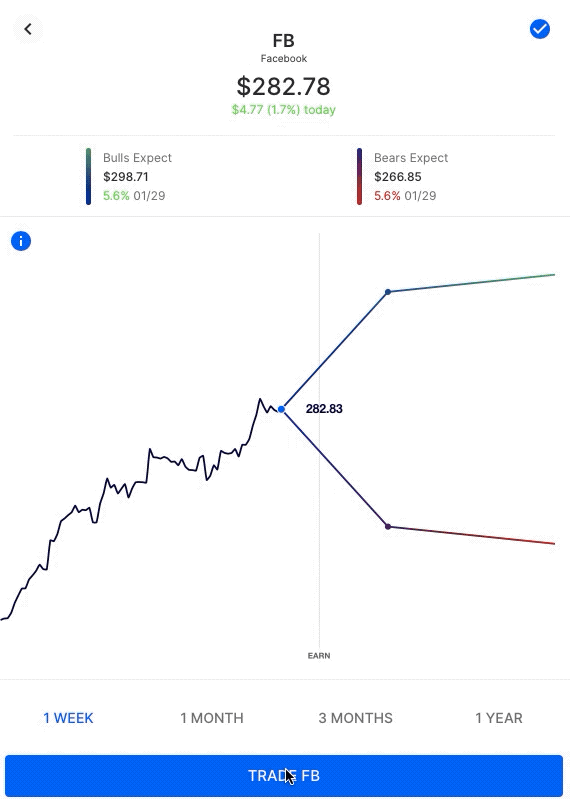
Using the Move for Income Generating Strategies
Finally, let’s consider the scenario where you believe that the options market has overpriced the move and believe that the stock will stay within the expected move on a given timeframe.
When ‘selling the move’, Premium (or income) received from selling options is kept if the stock stays within a specific range. Here’s a look at an Iron Condor for this week’s expiration in Apple as an example of a neutral strategy that seeks to collect premium (income) if a stock stays within the expected move.
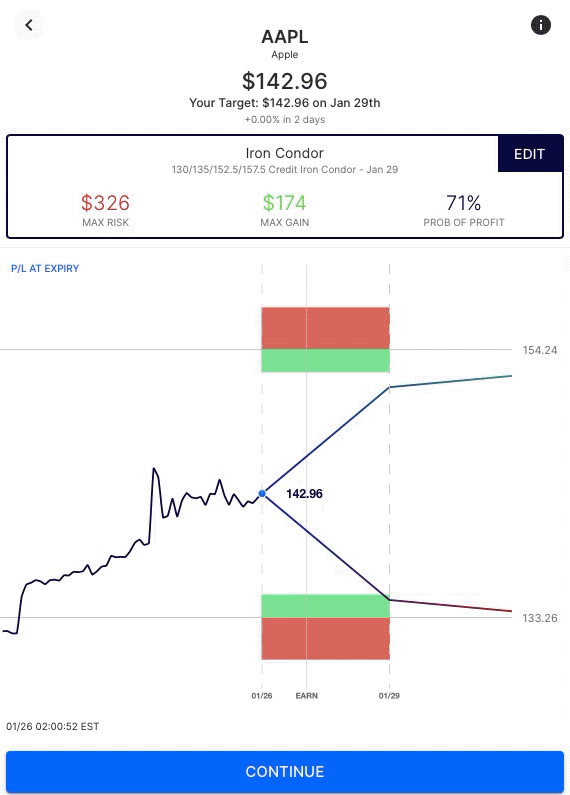
In this example, the Iron Condor establishes a range of max gain for the trade if AAPL stock closes anywhere between $135 and $152.50 on Friday’s expiry.
While by no means the only basis for strike selection, setting Condor strikes at the expected move is essentially taking the other side of option market consensus, while retaining the benefits of defined risk/reward. If the stock moves beyond $130 or $157.50, the trade results in a max loss.
Summary
Remember, the above are just examples of the many ways a trader might express a view using option spreads. They are intended solely to demonstrate how the expected move can provide actionable insight to consider before making any trade, particularly into an uncertain event. Whether gut-checking your own expectations versus the options crowd, generating trade ideas from option market signals, or for more informed strike selection. That’s why Options AI puts the expected move at the heart of its chart-based platform. Learn / Options AI has a couple of free tools as well as education on expected moves and spread trading. The concepts shown in Apple can apply to any stock and it is simply used here for illustrative purposes.



[…] post Facebook, Apple, earnings, and use of spreads He first appeared Artificial Intelligence Options: […]
[…] post Facebook, Apple, Earnings and Using Spreads appeared first on Options AI: […]
[…] post Facebook, Apple, Earnings and Using Spreads appeared first on Options AI: […]